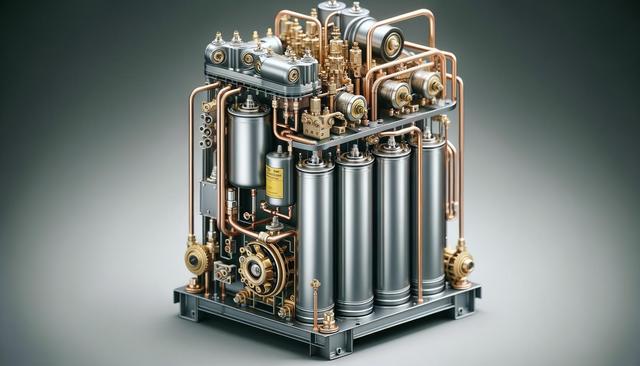Basic Structure of a Lead Acid Accumulator
The structure of a lead acid accumulator consists of several key components that work together to store and release electrical energy. At its core, the accumulator contains a series of cells, each producing around 2 volts. These cells are connected in series to form batteries of higher voltages, such as 12V commonly used in automotive systems. Each cell includes two types of electrodes: the positive plate made of lead dioxide (PbO2) and the negative plate composed of spongy lead (Pb).
These plates are immersed in an electrolyte solution of diluted sulfuric acid (H2SO4), which facilitates the electrochemical reactions necessary for charging and discharging. Separators made of porous insulating materials are placed between the plates to prevent short-circuiting while allowing ionic flow. The entire assembly is housed in a robust, acid-resistant casing, typically made from plastic or a similar durable material. Understanding this structure is essential for recognizing how the accumulator operates and why it remains relevant in various applications.
Working Principle and Chemical Reactions
The function of a lead acid accumulator relies on a series of reversible chemical reactions between its components. During discharge, the battery converts chemical energy into electrical energy, supplying power to an external load. The chemical reactions at the electrodes are as follows:
- At the positive plate: PbO2 + SO42− + 4H+ + 2e− → PbSO4 + 2H2O
- At the negative plate: Pb + SO42− → PbSO4 + 2e−
When charging, these reactions are reversed with the help of an external power source. The sulfate ions are removed from the plates and the original lead and lead dioxide materials are restored. This reversibility is what allows the accumulator to be recharged multiple times, making it suitable for repeated energy storage and release cycles.
Charging and Discharging Characteristics
Lead acid accumulators have well-understood charging and discharging profiles, which contribute to their widespread use. During charging, the voltage gradually increases as the battery stores energy. It’s important to control the charging rate to avoid overcharging, which can lead to water loss and plate degradation. Modern charging systems often include:
- Constant current charging during the initial phase
- Constant voltage charging as the battery nears full charge
- Float charging to maintain charge without overvoltage
Discharging occurs when the battery provides power to a connected device. The voltage decreases as the sulfuric acid is consumed and lead sulfate forms on the plates. The depth of discharge (DoD) and the rate at which energy is drawn impact the battery’s overall lifespan. Shallow discharge cycles tend to extend the battery’s service life compared to deep discharges.
Applications and Use Cases
Lead acid accumulators serve a broad range of applications due to their reliability, affordability, and ability to deliver high surge currents. They are particularly valuable in scenarios where initial cost and proven performance outweigh the need for high energy density. Common use cases include:
- Automotive batteries for starting, lighting, and ignition (SLI)
- Uninterruptible power supplies (UPS) for emergency backup
- Energy storage in off-grid renewable systems
- Industrial applications such as forklift batteries and backup systems in telecom facilities
Their ability to operate effectively in a wide range of temperatures and their tolerance for brief overloads make them suitable for both stationary and mobile settings.
Maintenance and Longevity
Proper maintenance plays a critical role in the performance and lifespan of lead acid accumulators. While some variants are sealed and require minimal upkeep, others—especially flooded lead acid batteries—need regular attention. Key maintenance practices include:
- Checking and topping up electrolyte levels with distilled water
- Ensuring clean and tight terminal connections
- Equalization charging to prevent stratification and sulfation
- Monitoring voltage and specific gravity to assess charge state
Typical service life can range from 3 to 10 years, depending on usage patterns, maintenance routines, and environmental conditions. Over time, factors such as sulfation, corrosion, and physical deterioration of plates contribute to capacity loss. However, with proper care, lead acid accumulators can provide consistent performance over multiple years.
Conclusion
Lead acid accumulators continue to play a vital role in both everyday and specialized energy storage applications. Their proven structure and functionality make them a reliable choice for users seeking cost-effective, rechargeable power solutions. Understanding their internal components, chemical operations, and maintenance requirements helps users extend their utility and optimize performance. Whether used in vehicles, emergency systems, or renewable setups, lead acid accumulators remain a foundational technology in the world of electrochemical energy storage.




Leave a Reply